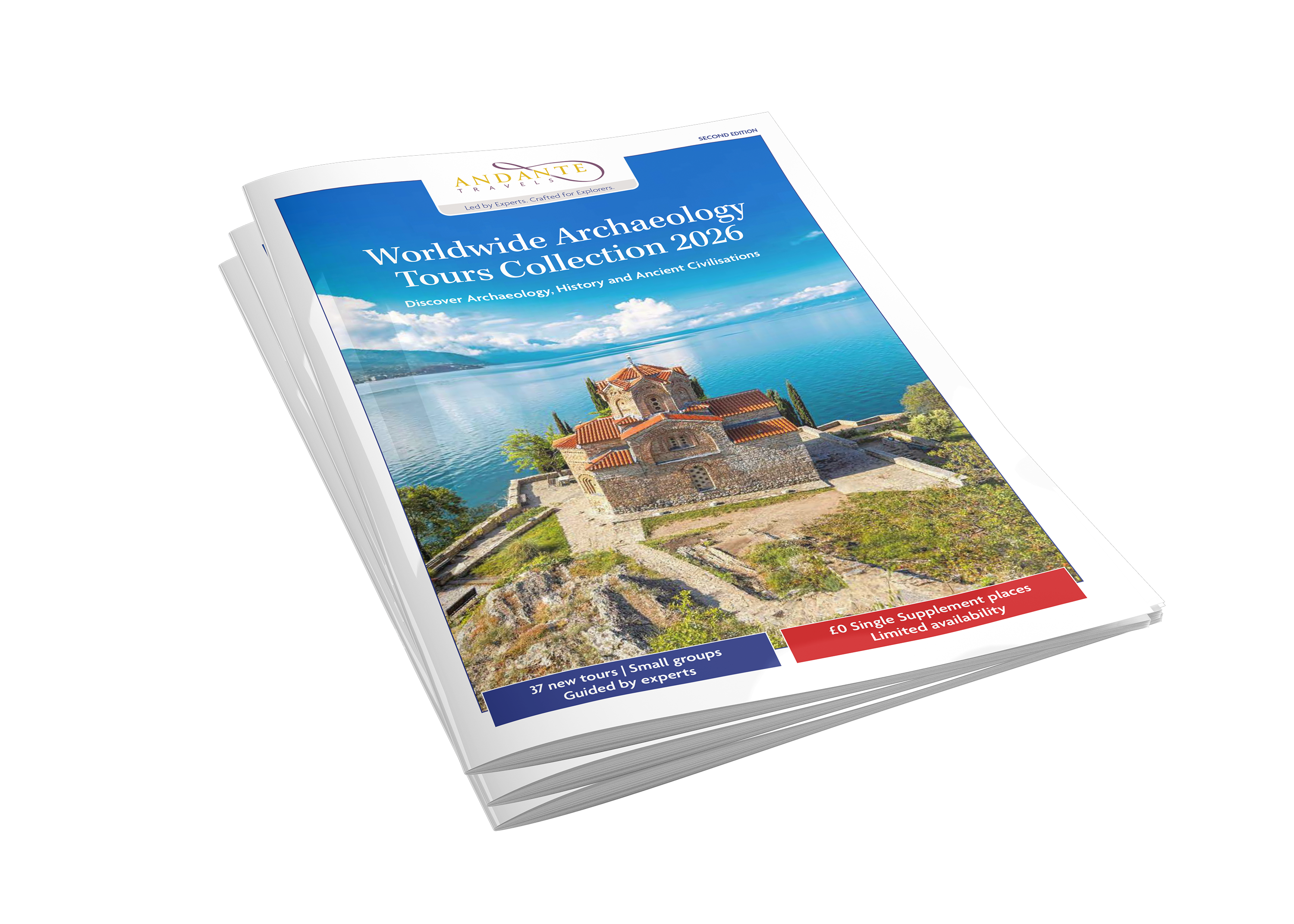Echoes of Mesopotamia: Journeying through Turkey's Ancient Worlds
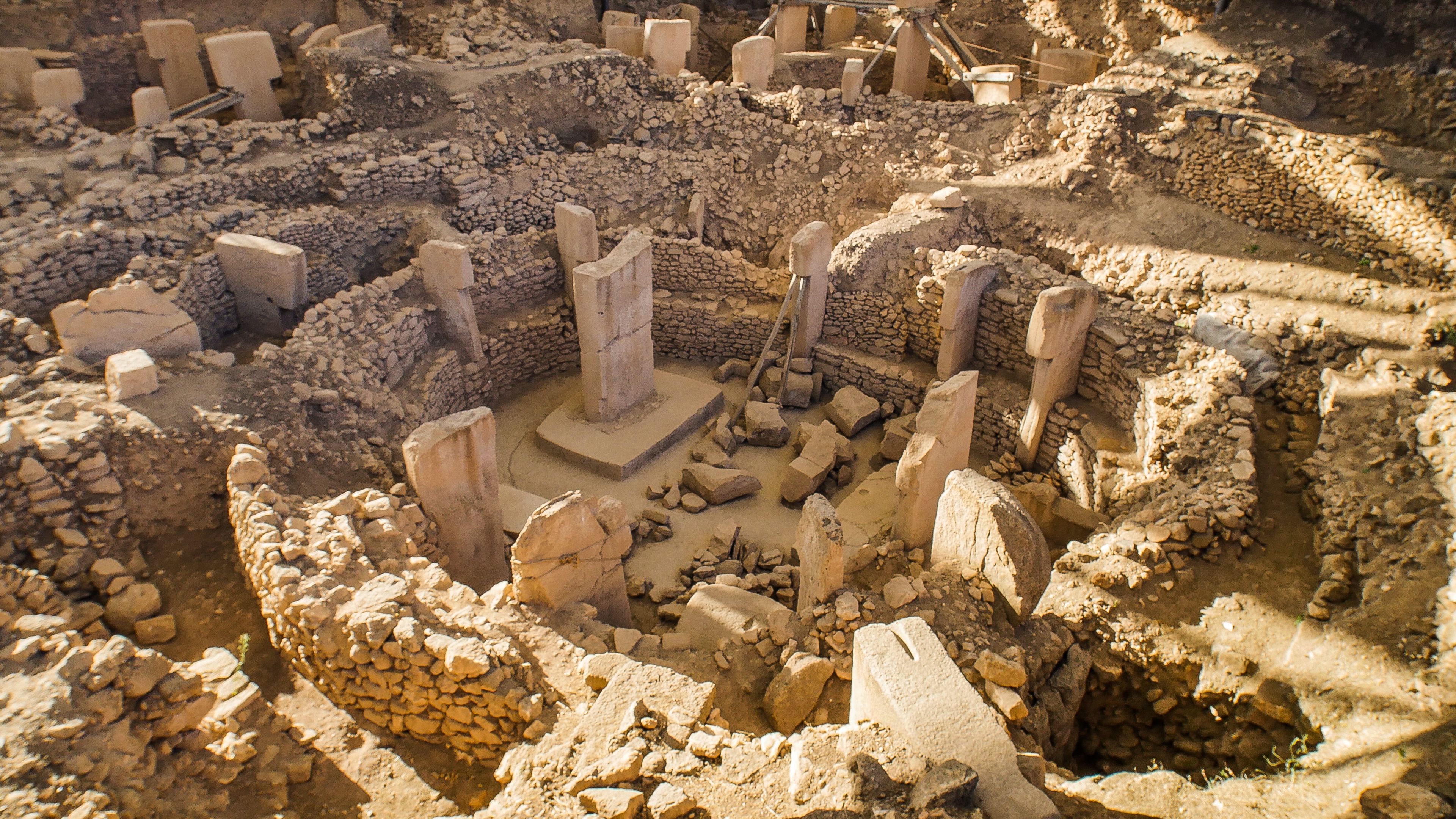
In the heart of Turkey, where the echoes of Mesopotamia resonate through geological wonders and historical landscapes, lies a terrain that whispers profound stories of human civilisation. From the extraordinary archaeological site of Çatal Hüyük—potentially the world’s earliest city—to the enigmatic ritual complex of Göbekli Tepe in upper Mesopotamia, this region represents a living museum of human innovation and cultural transformation. The Fertile Crescent stretches across this ancient Mesopotamian landscape like a narrative of human potential, chronicling humanity’s most pivotal transitions: the birth of agriculture, the first domestication of livestock, and the emergence of complex societies. Through Cappadocia’s surreal landscapes and Southeast Turkey’s rich archaeological heritage, we trace the intricate pathways of Mesopotamian civilisations that flourished, evolved, and disappeared across millennia, leaving behind extraordinary testimonies of human ingenuity etched into stone, ceramic, and architectural remnants.
Join Andante in Turkey: From Çatal Hüyük to Göbekli Tepe to visit megaliths, volcanis landscapes and statues of Greek Persian gods.
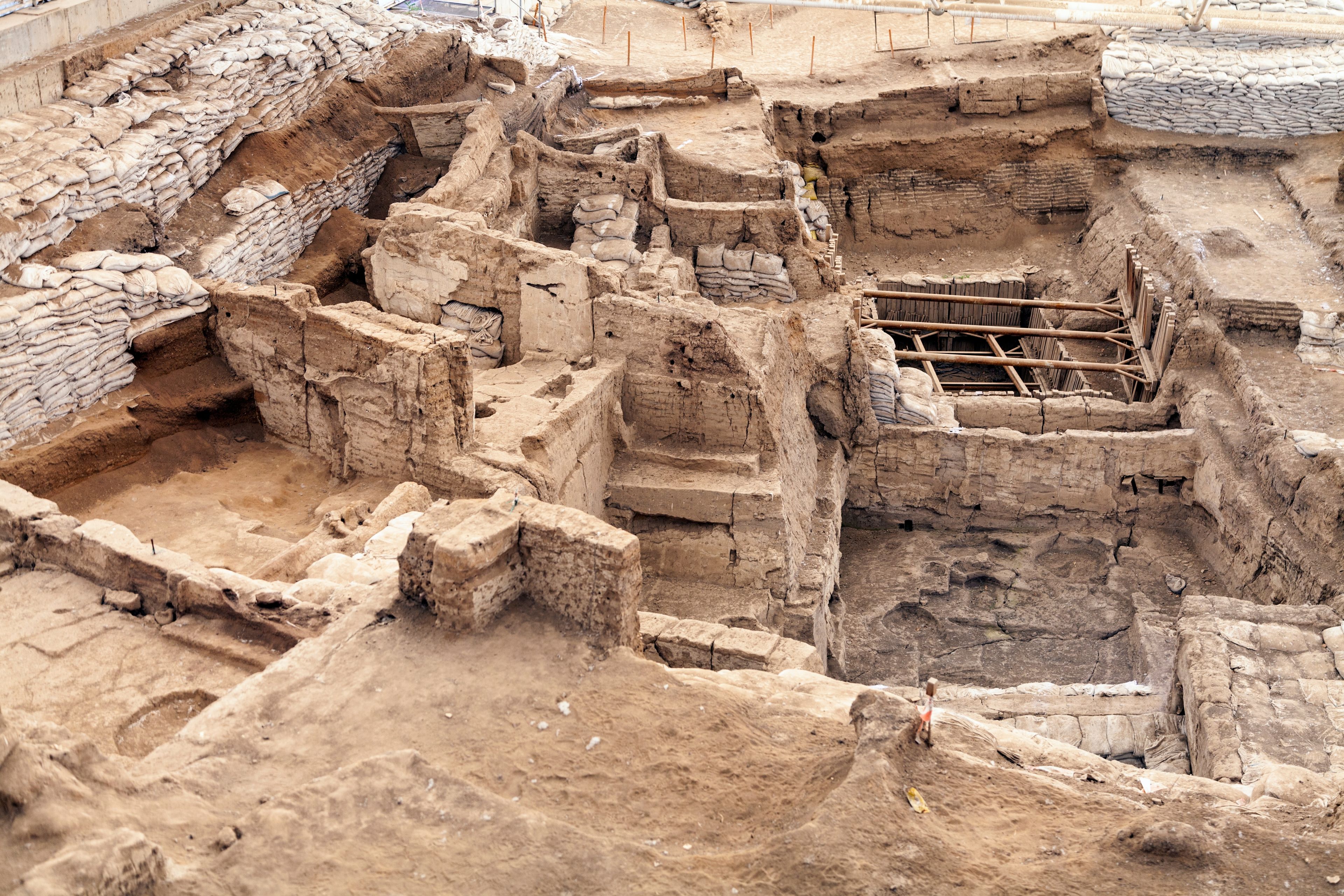
Çatal Hüyük
Çatal Hüyük stands as an extraordinary archaeological marvel, comprising two distinctive tells rising 20 metres above the surrounding plains. This exceptional Neolithic settlement, dating from 7500-6500 BC, represents one of the most significant archaeological sites of its period. The site’s unique architectural configuration features closely packed houses with innovative roof access systems, offering unprecedented insights into early urban living. As a testament to human social organisation and architectural innovation, Çatal Hüyük provides a remarkable window into the complex social structures and living arrangements of Neolithic communities, revealing the sophisticated development of human settlements during a critical period of human technological and cultural evolution.
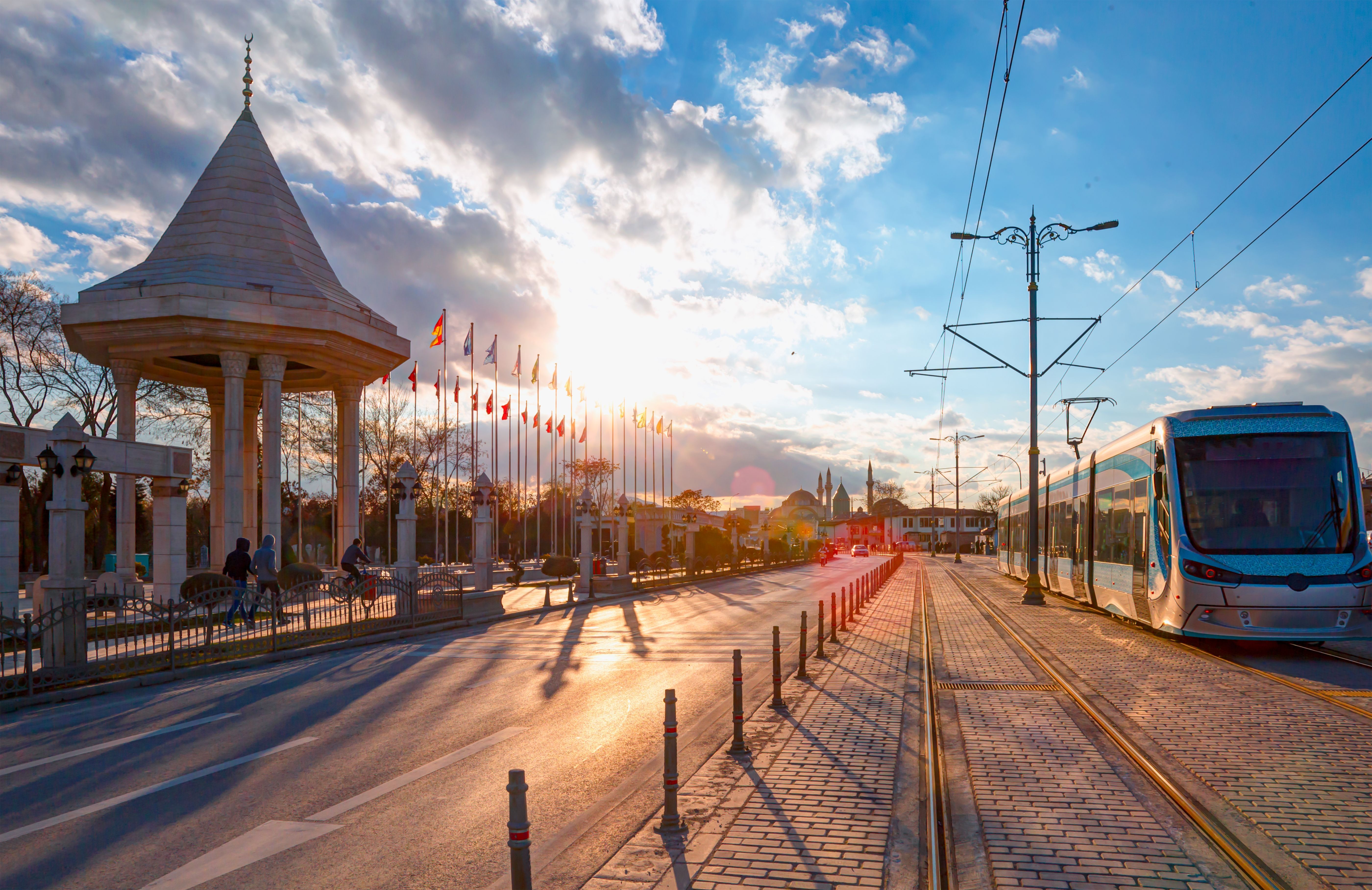
Konya
Konya, a city steeped in cultural and historical significance, stands as a testament to Turkey’s rich Islamic heritage. The Mevlana Museum, formerly a tekke (dervish hall), serves as the mausoleum of the renowned Sufi mystic Rumi, attracting scholars and spiritual seekers from around the world. The Karatay Madrasa represents an exceptional example of Selçuk Turkish architectural brilliance, showcasing the intricate craftsmanship of the period. The Alaeddin Mosque, with its distinctive Selçuk architectural style, features a remarkable ‘forest’ of columns and an exceptionally rare early ebony prayer platform. These architectural landmarks reveal Konya’s profound cultural depth, illustrating the city’s historical importance as a centre of Islamic learning, mysticism, and artistic excellence during the Selçuk period.

Göreme and Sarihan Caravansary
Göreme Open Air Museum emerges as a UNESCO World Heritage Site of extraordinary archaeological and cultural significance. This remarkable landscape of eroded volcanic tuffs presents a stunning collection of rock-cut churches from the mid-Byzantine period. These extraordinary architectural spaces bear profound witness to the faith, tenacity, and resilience of early Christian communities who survived amid challenging historical circumstances, including persistent Arab raids and the theological persecutions of the Iconoclastic movement. The Sarıhan Caravansary, one of many that once serviced the Selçuk trade route from Konya to Kayseri, further enriches the region’s historical narrative, illustrating the complex networks of trade and cultural exchange that defined this remarkable landscape.
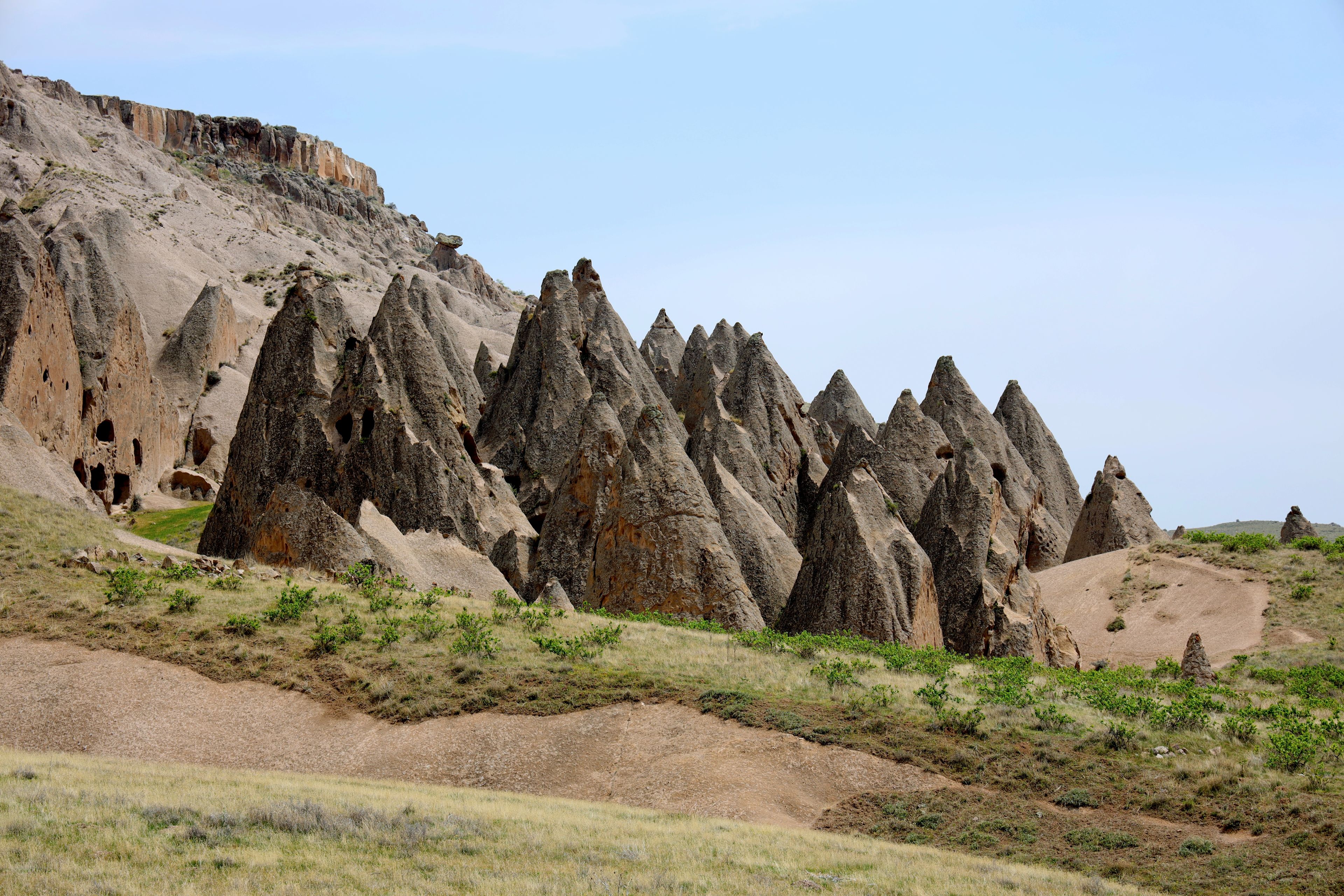
Ihlara Valley and Aşıklı Höyük
Cappadocia’s Ihlara Valley represents a breathtaking geological and archaeological landscape, a verdant gorge carved by a fast-flowing river and steeped in historical significance. This extraordinary location once housed an incredible architectural complex of approximately four thousand dwellings and one hundred rock-cut churches, testament to the extensive early Christian settlements that thrived in this remarkable terrain. Nearby, Aşıklı Höyük emerges as an archaeological marvel, a settlement mound with complex stratification dating between 9000 and 7400 BC. Its strategic location near a significant obsidian source highlights the region’s importance in prehistoric economic and technological development. The landscape reveals a profound narrative of human adaptation, religious practice, and technological innovation, embodying the rich archaeological heritage of Cappadocia’s unique geological formations.
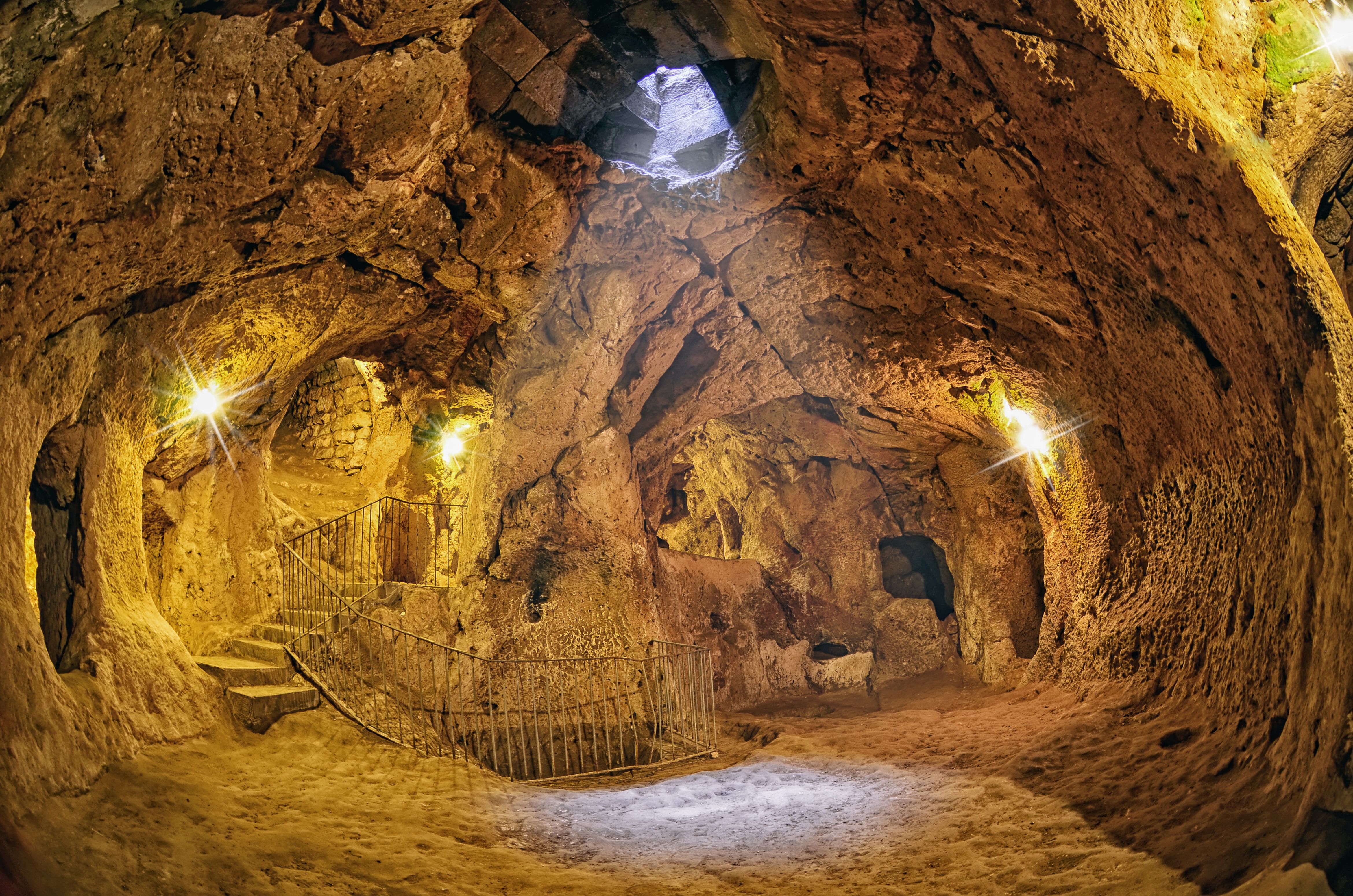
Derinkuyu
Derinkuyu represents an extraordinary subterranean marvel of Byzantine architectural engineering, standing as one of the largest and most accessible underground cities in Cappadocia. Carved deep into the region’s distinctive volcanic rock formations, this complex settlement demonstrates remarkable human ingenuity in creating multi-level underground habitats. The city extends several levels beneath the earth’s surface, featuring sophisticated ventilation systems, water channels, and interconnected chambers that suggest a highly organised community structure. Archaeological evidence reveals intricate living spaces, storage areas, communal halls, and potential defensive mechanisms, though the precise original purpose remains a subject of scholarly debate. Derinkuyu’s geological context made underground construction a practical solution, reflecting the adaptive strategies of Byzantine communities in this unique landscape. The underground city’s complexity challenges conventional understanding of historical architectural practices, offering a profound insight into human resilience and technological creativity in challenging environmental conditions.
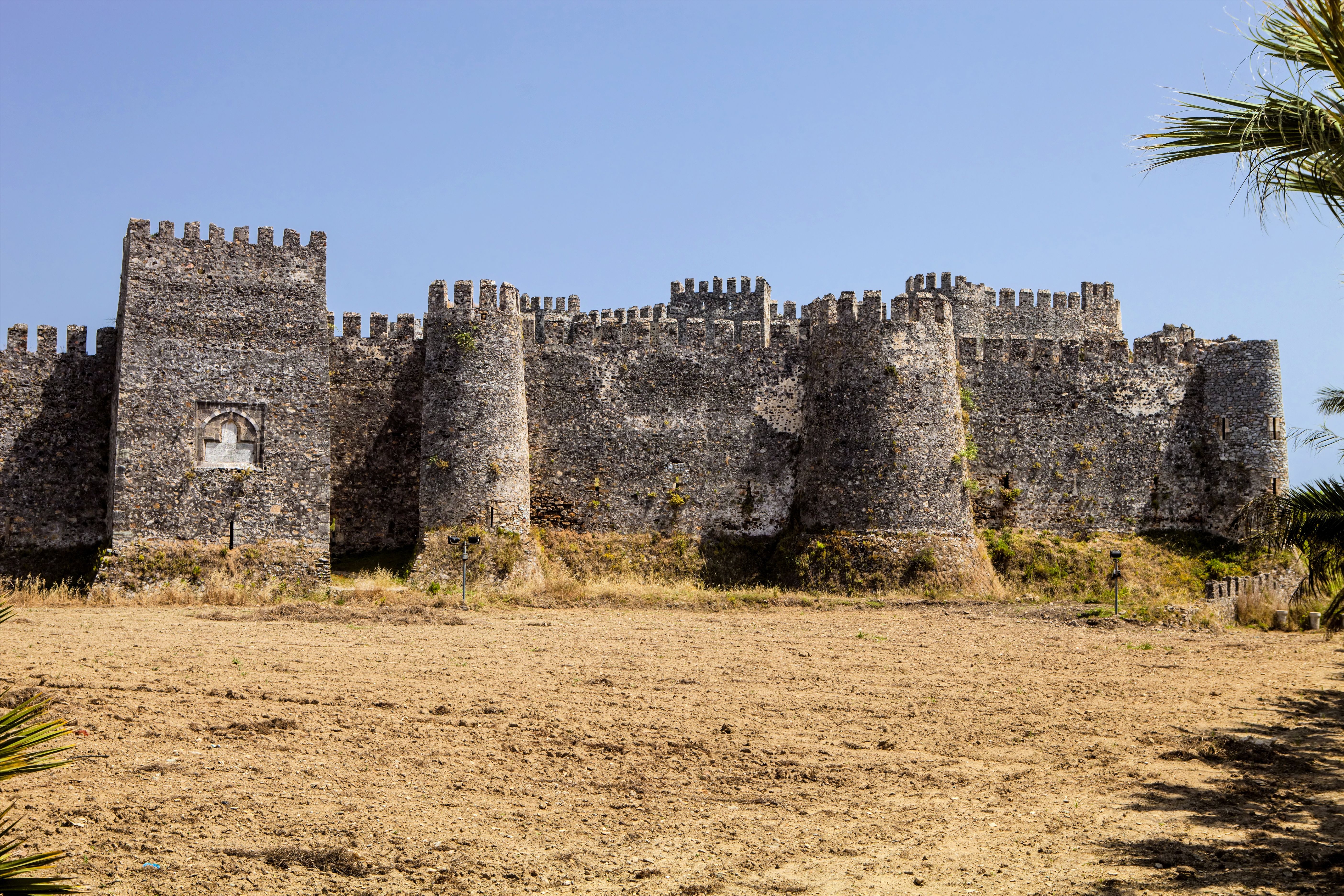
Adana and Karatepe
The Adana Archaeology Museum stands as a pivotal repository of Hittite cultural heritage, housing an exceptional collection of artefacts that illuminate the complex civilisations of ancient Anatolia. Located in the historic region of southern Turkey, the museum provides profound insights into Hittite material culture, artistic expressions, and historical developments. Nearby, the eighth-century BC fortress palace of Karatepe emerges as an archaeological treasure within a carefully preserved archaeological park. The site is particularly significant for its remarkable bilingual inscription, revealing the identity of the neo-Hittite ruler Azatiwatas, who describes himself as “The Blessed of the Sun, the servant of the Storm-God”. The fortress’s twin gateways, adorned with intricately relief-carved figurative slabs, represent a stunning example of neo-Hittite architectural and artistic sophistication, offering a tangible connection to the region’s rich historical narrative.
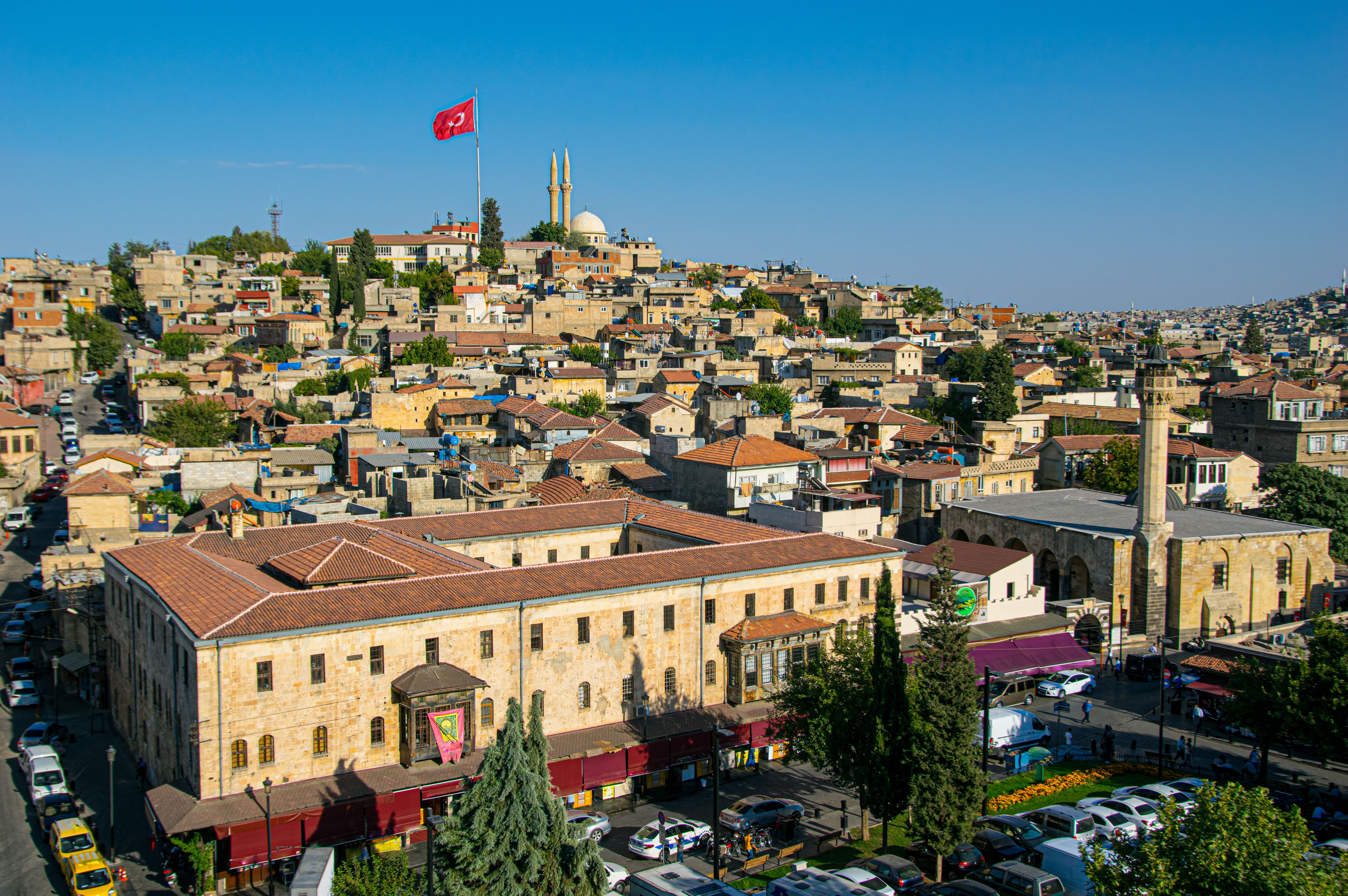
Gaziantep
The Zeugma Mosaic Museum represents a critical cultural preservation effort, housing an extraordinary collection of Roman mosaics from Zeugma, a significant ancient city once situated at a crucial crossing point of the Euphrates River. These exquisite mosaics provide profound insights into Roman artistic techniques, social structures, and aesthetic sensibilities, rescued from a landscape dramatically transformed by modern infrastructure. Nearby, the town of Halfeti illustrates the profound impact of contemporary engineering, with its partially submerged landscape revealing haunting remnants of historical architecture. Houses and minarets emerge from the water, creating a surreal tableau of human settlement and environmental change. The medieval fortress of Rumkale, standing monumentally upriver, adds another layer of historical complexity to this landscape, representing centuries of architectural and strategic significance in this geographically strategic region.
The city’s citadel, largely constructed by Turkish Mamluks during the 13th-16th centuries, represents a sophisticated architectural achievement built atop existing Roman walls and an underlying Neolithic settlement. The urban landscape reflects a rich cultural tapestry, with bazaars brimming with traditional commodities like copper ware, dried pepper flakes, and pistachio nuts. Architecturally, the city’s mosques reveal strong influences from Arab lands to the south, creating a distinctive aesthetic reminiscent of nearby Aleppo. This urban environment demonstrates Gaziantep’s strategic position as a cultural and commercial centre, where multiple historical periods and civilisational influences intersect, creating a unique architectural and cultural landscape that speaks to the region’s complex historical narratives.
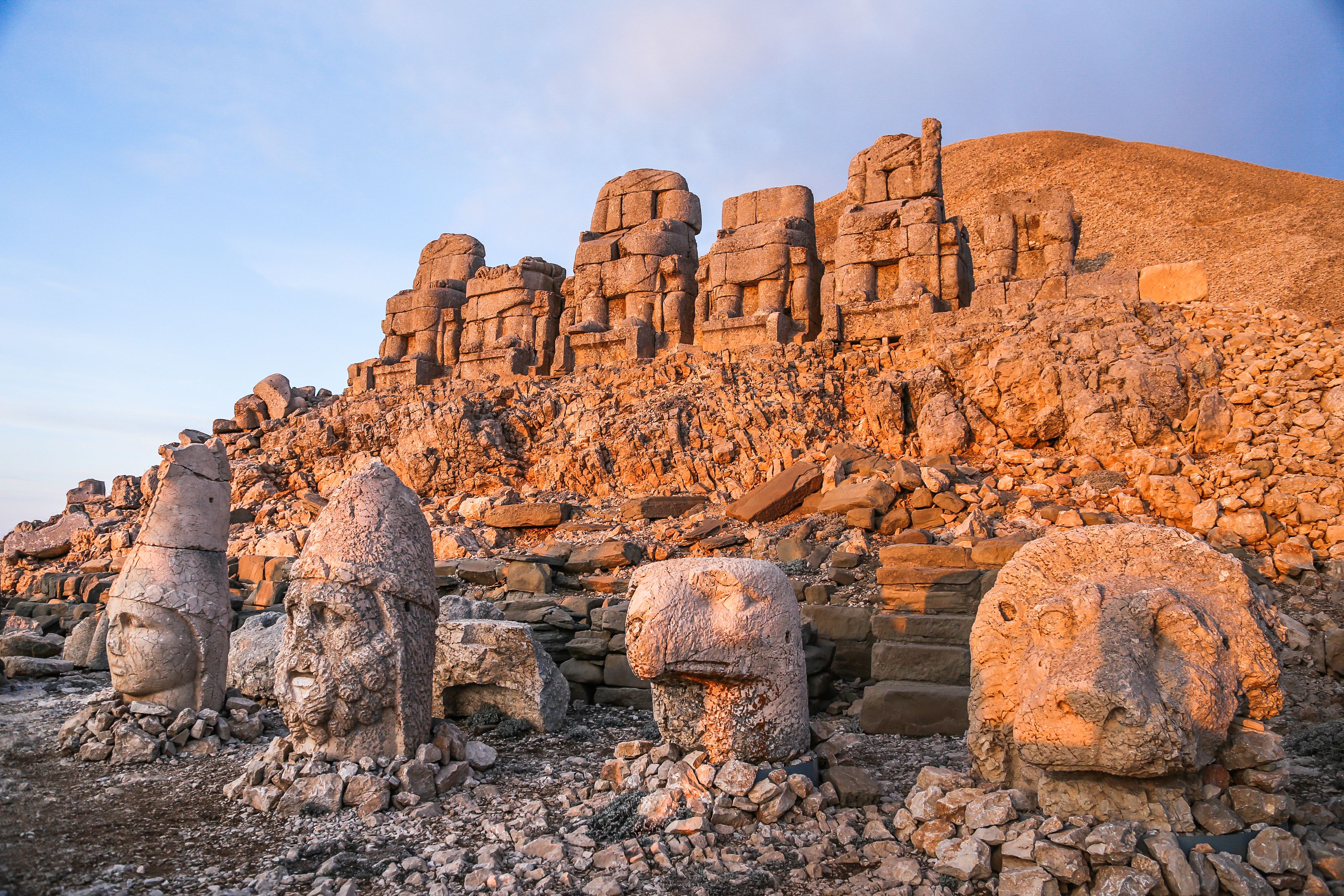
Mount Nemrut and Adiyaman
Mount Nemrut emerges as an extraordinary archaeological testament to the Commagenian kingdom, representing a UNESCO World Heritage Site of immense historical significance. Situated on a remote hilltop, the site features a monumental sanctuary constructed by King Antiochus I, centred around the world’s largest tumulus and an extraordinary collection of colossal statues depicting both gods and the king himself. Nearby, the Roman bridge at Cendere, constructed by Legio XVI Flavia Firma during the reign of Septimius Severus around AD 200, demonstrates the region’s strategic importance and engineering prowess. The Karakuş (Black Bird) Tumulus, likely commemorating the burials of Antiochus’ female family members, further enriches the landscape’s archaeological narrative. This region represents a remarkable confluence of architectural ambition, royal commemoration, and cultural complexity, embodying the sophisticated political and religious practices of the Commagenian kingdom in a dramatic mountain landscape.
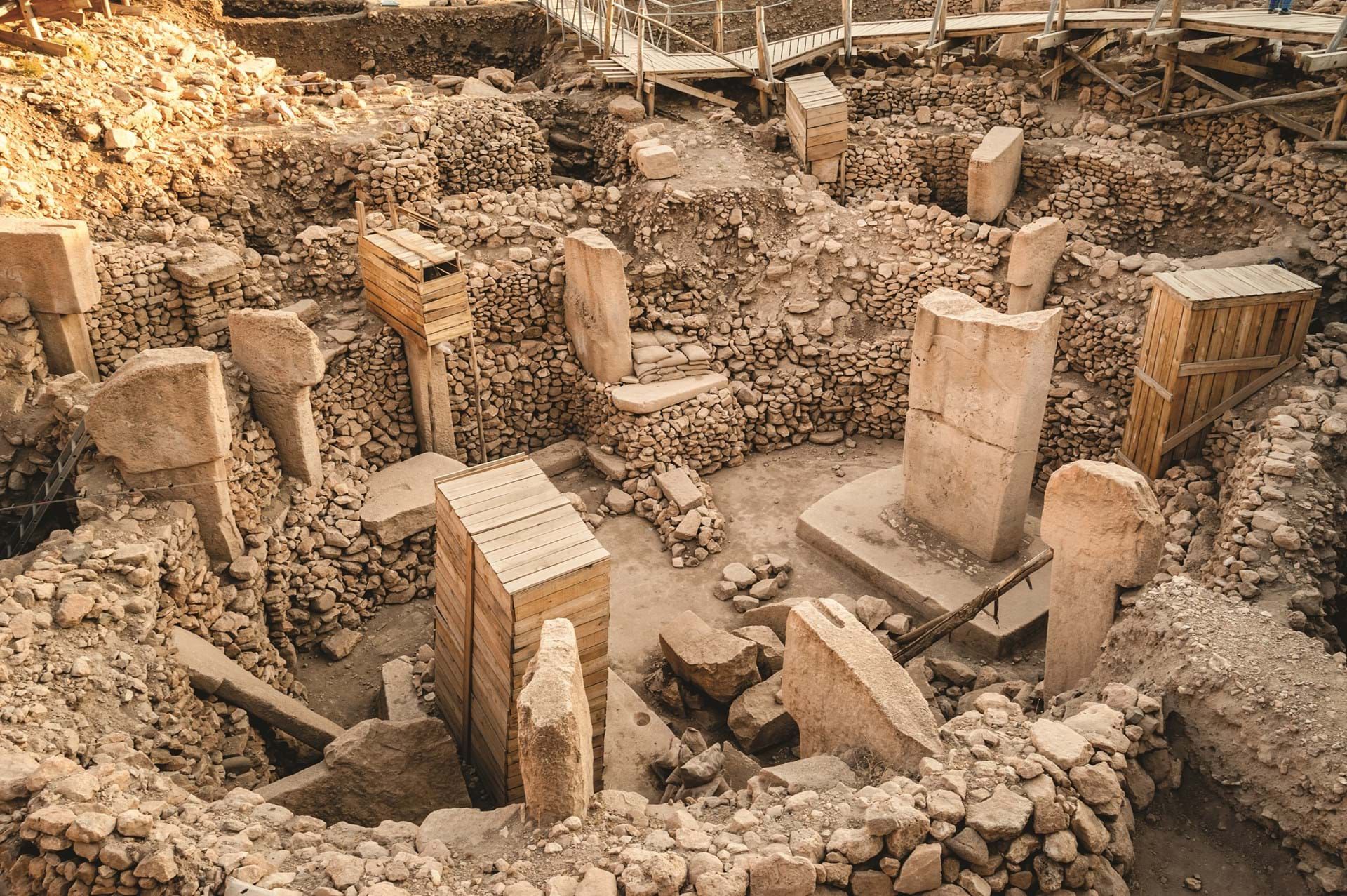
Göbekli Tepe and Karahan Tepe
Göbekli Tepe emerges as an extraordinary archaeological marvel, a UNESCO World Heritage Site since 2018, located in the anti-Taurus mountains near Şanlıurfa. This spectacular early Neolithic complex fundamentally challenges archaeological understanding of prehistoric societies, featuring an unprecedented series of structures centred around carved megaliths reaching up to 5 metres in height. The site represents a remarkable testament to early human architectural and symbolic capabilities, demonstrating complex social organisation and sophisticated symbolic practices long before previously assumed. Nearby Karahantepe complements this archaeological landscape, presenting another significant prehistoric site within the Taş Tepeler (Stone Hills) region. Karahantepe’s 10-hectare area reveals a complex of circular enclosures and 250 T-shaped monoliths, further expanding our understanding of Neolithic architectural and ritual practices in southeastern Anatolia. Together, these sites represent a profound archaeological testament to human cultural complexity during a critical period of human technological and social evolution.
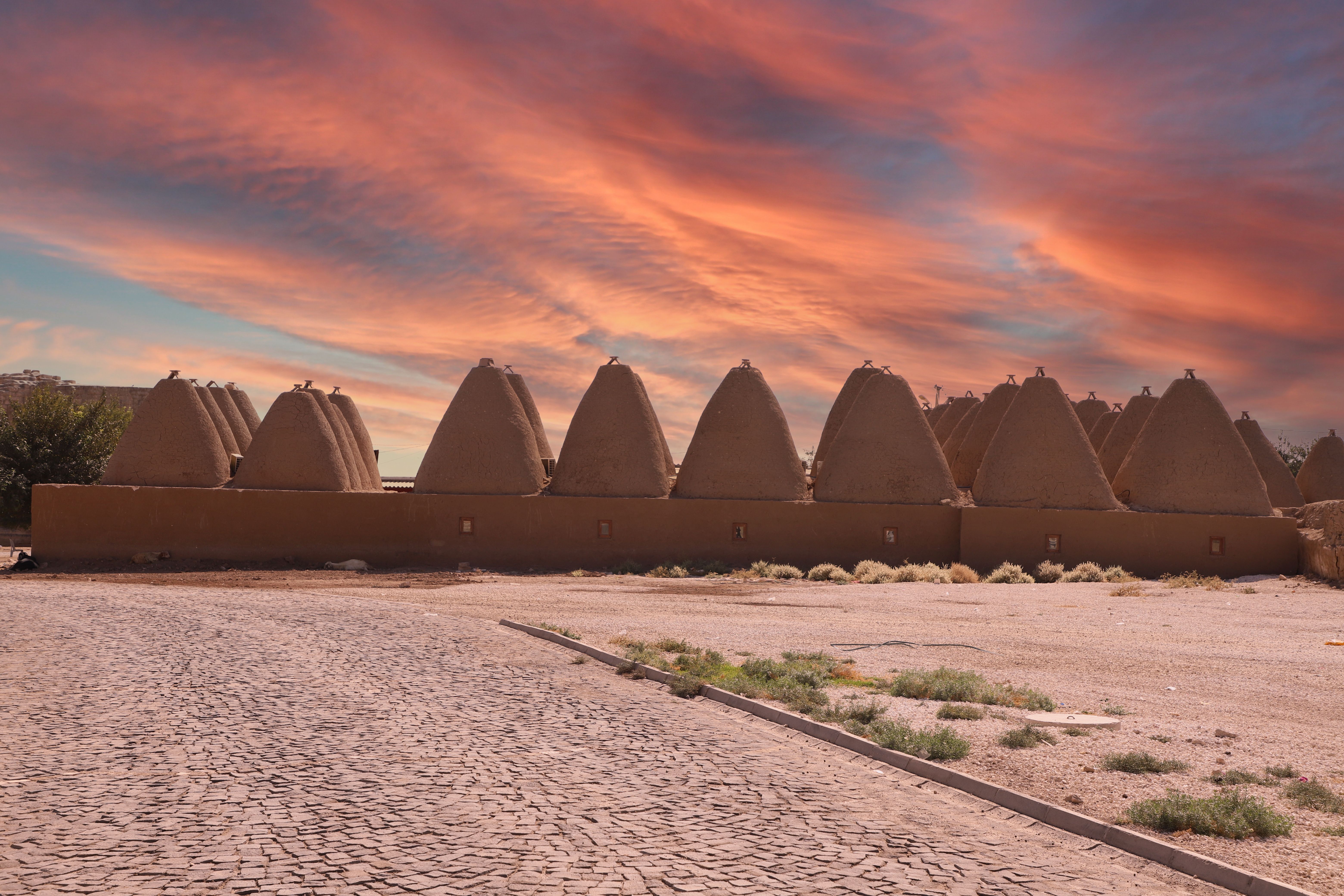
Şanliurfa
Şanlıurfa emerges as a vibrant city deeply intertwined with religious, cultural, and archaeological significance, embodying Turkey’s most distinctly Middle Eastern urban character. The Pools of Abraham represent a profound spiritual landscape, steeped in Islamic narrative where sacred carp inhabit waters associated with the legendary encounter between Abraham and Nimrod. The city’s labyrinthine bazaar reveals a complex urban texture, reflecting centuries of commercial and cultural exchange. An Ottoman caravanserai stands as an architectural testament to the region’s historical trading networks, while the rocky citadel provides a commanding perspective over the old city’s intricate urban landscape.
The Şanlıurfa Museum, a monumental complex completed in 2015, encapsulates the region’s rich historical tapestry. Its expansive exhibition halls house an extraordinary collection spanning multiple historical periods, featuring remarkable finds from surrounding Neolithic sites. A life-size reconstruction of one of Göbekli Tepe’s stone circles anchors the exhibition, offering profound insights into one of the world’s most significant archaeological discoveries. The museum’s collections encompass diverse civilisational artefacts, including significant archaeological materials from Assyrian, Babylonian, Hittite, Neolithic, and Bronze Age periods. An adjoining structure further enriches the museum’s offerings with an exceptional in-situ collection of late-Roman and early Byzantine mosaics, originally part of the royal palace of the Osroene kingdom.
Şanlıurfa’s architectural and cultural topography represents a remarkable confluence of historical, religious, and archaeological narratives, showcasing the city’s rich and layered heritage at the intersection of diverse cultural influences.
NEWSLETTER
Opt-in to our email newsletter and hear about new offers first – view our privacy policy for details.
